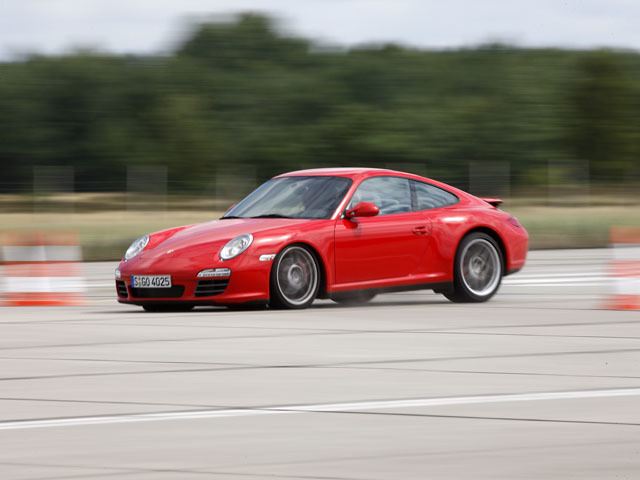Accelerating and Braking a car
 Curves at high speed can be very dangerous, even if you're in a sports car with different systems such as stability control, traction control and abs brakes.
Curves at high speed can be very dangerous, even if you're in a sports car with different systems such as stability control, traction control and abs brakes.
John accelerated his sportive car to a speed of 216 km/h, but the road is too sinuous and he had to reduce the speed of his car to 72 km/h in 3 seconds, approximately how much distance was traveled by John in this time?
This section requires Javascript.
You are seeing this because something didn't load right. We suggest you, (a) try
refreshing the page, (b) enabling javascript if it is disabled on your browser and,
finally, (c)
loading the
non-javascript version of this page
. We're sorry about the hassle.
3 solutions
Assuming that the car decelerates uniformly,
D i s t a n c e = t × v a v g
2 1 6 k m h − 1 = 6 0 m s − 1
7 2 k m h − 1 = 2 0 m s − 1
S = 2 t ( u + v )
S = 2 3 s ( 2 0 m s − 1 + 6 0 m s − 1 ) = 1 2 0 m
used v=u+at n then s=ut+0.5gt^2
216 km/h = 216000/3600 ms^-2 = 60 ms^-2
72 km/h = 72000/3600 ms^-2 = 20 ms^-2
Now, u=60 ms^-2,v=20 ms^-2,t=3 s
So, a=(v-u)/t
or, a=(20-60)/3 = -13.33 ms^-2
We know, s= ut+(1/2)at^2
So, s= 60 3+0.5 (-13.33)*3^2
or, s= 180 - 59.985 = 120.015
Therefore the answer is 120